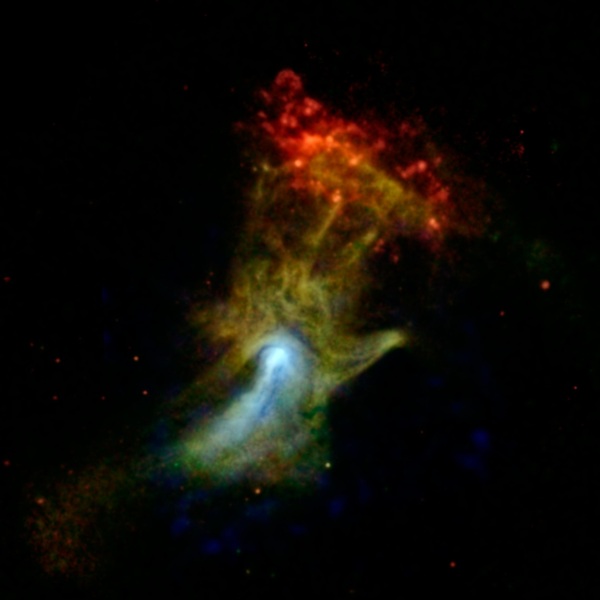
The “Hand of God” photo seen above was captured by NASA’s Nuclear Spectroscopic Telescope Array, or NuSTAR for short.
Actually, to be a bit more precise, the image is a combination of two telescopic observations: high-energy X-rays, shown in blue, were captured by NuSTAR, while NASA’s Chandra X-ray Observatory supplied the the green and red parts of the image using low-energy X-rays.
“NuSTAR's unique viewpoint, in seeing the highest-energy X-rays, is showing us well-studied objects and regions in a whole new light,” NuSTAR telescope principal investigator Fiona Harrison, of the California Institute of Technology in Pasadena, said in a statement.
Breaking this image down, what’s depicted here is a pulsar wind nebula, which is produced by the dense remnant of a star that exploded in a supernova. Left behind is a pulsar, roughly 12 miles in diameter, which spins 7 times per second blowing a wind of particles into the surrounding material that was ejected during the star’s violent death.
As these particles interact with nearby magnetic fields, a sort of X-ray glow is produced; in this case, that glow produced the shape of a hand.
The red cloud captured near the fingertips of the hand is a separate cloud structure from the pulsar called RCW 89. Astronomers theorize the pulsar’s wind may be heating the cloud which, in turn, produces the low-energy X-ray glow.
For those curious about the difference between the two telescopes, the X-ray energies seen by the NuSTAR range from 7 to 25 kiloelectron volts (keV); the energies seen by Chandra range from 0.5 to 2 keV.
The nebula is estimated to be located 17,000 light years away.
Story via jpl.nasa.gov
Advertisement
Learn more about Electronic Products Magazine





